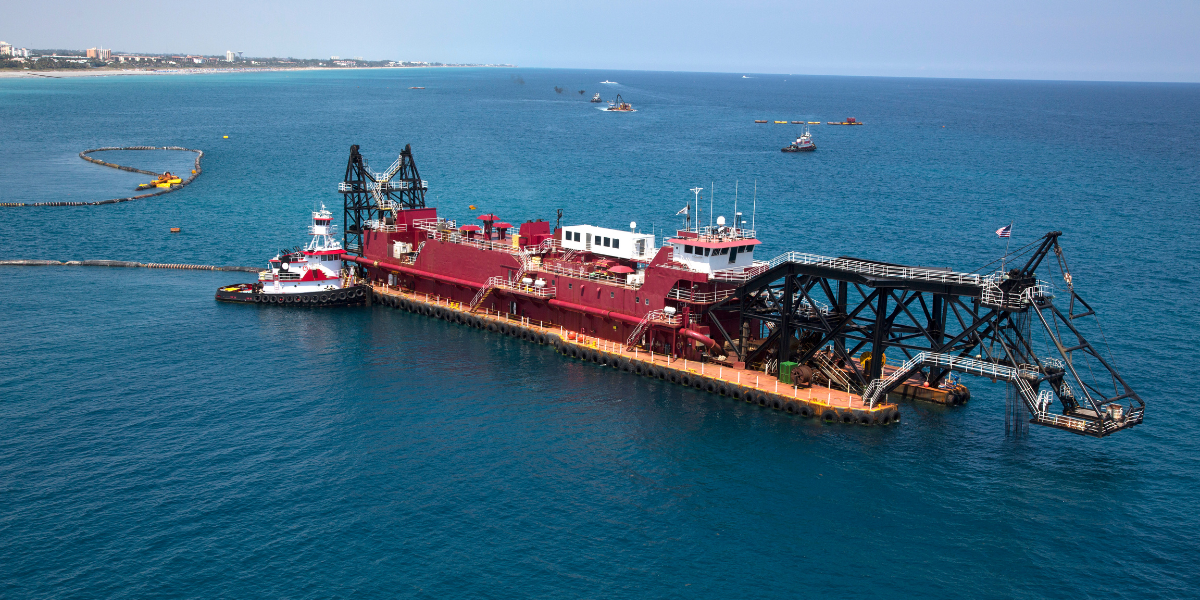
This article was published in the 2024 Excavation Safety Guide.
In March 2009, a group of companies met with a mission to identify, trend, and explore common industry issues in preventing coastal and marine pipeline facility damage, releases, and spills. That day, the CAMO (Coastal and Marine Operators) pipeline industry group was born.
In 2023, CAMO included a consortium roughly 35 companies strong and growing. CAMO’s current focus among other initiatives is to extend the same “On Land” damage prevention emphases and awareness into coastal and marine areas.
One of CAMO’s 2024 initiatives is to rollout the new MarineSafe811 program that will enhance and drive “Goal of Zero Incidents, Near Misses and to Save Lives” through the Safety, Education, Integrity, Protection, and Damage Prevention of underwater infrastructure - resulting in a reduction or elimination of safety and/or environmental related accidents.
Your job may involve decisions that may directly or indirectly impact miles of underwater oil, gas, or chemical pipelines. With inland waterways such as rivers, bays, lakes, coastal areas and offshore areas, pipelines coexist with vessel and boat activity of all kinds. With more pipelines being installed every day, compounded with increased dredging and marine construction activity in the same waters, the chance of a marine vessel contacting an underwater pipeline continues to grow.
How to Stay Safe Around Pipelines
Making an 811 notification, even in marine areas, is the foundation for the safety of personnel. Additionally, pipelines need to be respected for their potential hazardous impacts to human life and the environment when ruptured. Understanding the roles pipeline and marine construction companies play in safety and damage prevention will help create a successful project. Precautions by all parties need to be understood, agreed upon, and in place before the project begins. Avoidance procedures should be followed for marine construction projects of all sizes. Pipeline companies and marine construction companies generally have in-house tolerance or “no-go” zones where work may be unsafe or have special conditions. Marine Exclusion Zones, on-land known as Tolerance Zones, are areas near the pipelines where no activity or work should occur. Before work begins all parties should be in mutual agreement on the Tolerance Zones. Although Exclusion Zones vary among dredging and marine construction companies, 75 feet minimum is generally the no-go working distance.
Obtaining Pipeline Information
Due diligence is necessary when gathering pipeline coordinates, ownership, and contact information. Multiple sources must be checked and inconsistencies may exist across those sources. In many cases, other types of lines may exist in your project area, such as electric, water, fiber optic, phone, and sewer, to which the same general precautions apply. It is beneficial to familiarize yourself with the different pipeline resources available. Each data source has a different layout and provides different information. Question the pipeline companies. It is their responsibility to provide you with the facts. Prior to kicking off a project all parties involved must agree on project plans, crossing agreements, avoidance and safety measures, and work together to stay informed through project duration.
Once your marine construction project scope is known, outline your total project footprint in your execution plan and voyage plan. Identify all waterways, wetlands, and marine areas that will be traversed by project vessels including dredged material placement areas, heavy equipment transit ways across placement areas, equipment mooring areas, staging areas, off-loading areas, site access areas, anchoring and spud down areas, and any other areas of operational impact.
Safety, Environment, and Emergency Response
Saving lives, protecting the environment, and effectively responding to emergencies are the focus. Always consult with the pipeline company to learn if there are any specific safety, environmental, or emergency concerns and capture them in your safety plan. Cover the plan with all project and vessel personnel. Re-evaluate the plan as new hazards emerge. Include the following recommendations in your plans:
How to Identify a Pipeline Leak
The main signs of a pipeline leak are:
- A continuous bubbling, blowing, or hissing sound from the water
- A rainbow sheen or unusual colored water
- Hydrocarbon smell
Note: Natural gas may be odorless. Always have an active gas detector activated during operations.
Actions After a Pipeline Leak
- Shutdown or minimize the use of all possible ignition sources, motors, lights, etc.
- If possible, drift out of the area before starting a motor or ignition source.
- Evacuate the vessel, if needed.
- Evaluate the situation; record your exact location and time; and move upwind at least ¼ mile or away from the affected area. When safe, call 911.
- Prevent and warn other vessels from entering the area.
- Boom-off or secure the area, if possible.
- If you see a pipeline sign nearby, call the emergency number listed.
Emergency Response and Notification
- Do not extinguish a pipeline fire.
- Immediately contact the pipeline company 24/7 emergency number in your plan to shut down the line and provide any pipeline information and location data. This will help the pipeline company identify the impacted line.
– Wind and water flow direction are helpful.
– Include the location of the nearest boat launch, if known.
- Notify the Coast Guard and the National Response Center (NRC) at (800-424-8802).
- Call 911 to notify the local emergency response agencies.
- Check your state’s laws for other entities you must notify when an incident occurs.
Safety and Emergency Plans
All project plans should have the following basic pipeline information stored in multiple readily available locations:
- List of all pipelines in the project scope and the local company contact
- List of the products in each pipeline
– This will help evaluate the risk and response level in the event of a release.
- Profile of the line X, Y, Z or as close as possible
- 24/7 emergency contact number
If you think a pipeline was struck but no leak occurs, call both the emergency and local contacts. In many states, reporting a strike is required by law.

![ESM Sidebar Ad[87] ESM Sidebar Ad[87]](https://excavationsafetyalliance.com/hubfs/ESM%20Sidebar%20Ad%5B87%5D.gif)



Comments